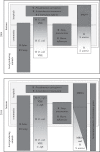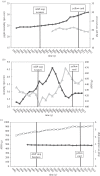The livestock reservoir for antimicrobial resistance: a personal view on changing patterns of risks, effects of interventions and the way forward
- PMID: 25918442
- PMCID: PMC4424434
- DOI: 10.1098/rstb.2014.0085
The livestock reservoir for antimicrobial resistance: a personal view on changing patterns of risks, effects of interventions and the way forward
Abstract
The purpose of this review was to provide an updated overview on the use of antimicrobial agents in livestock, the associated problems for humans and current knowledge on the effects of reducing resistance in the livestock reservoir on both human health and animal production. There is still limiting data on both use of antimicrobial agents, occurrence and spread of resistance as well as impact on human health. However, in recent years, emerging issues related to methicillin-resistant Staphylococcus aureus, Clostridium difficile, Escherichia coli and horizontally transferred genes indicates that the livestock reservoir has a more significant impact on human health than was estimated 10 years ago, where the focus was mainly on resistance in Campylobacter and Salmonella. Studies have indicated that there might only be a marginal if any benefit from the regular use of antibiotics and have shown that it is possible to substantially reduce the use of antimicrobial agents in livestock production without compromising animal welfare or health or production. In some cases, this should be done in combination with other measures such as biosecurity and use of vaccines. To enable better studies on both the global burden and the effect of interventions, there is a need for global harmonized integrated and continuous surveillance of antimicrobial usage and antimicrobial resistance, preferably associated with data on production and animal diseases to determine the positive and negative impact of reducing antimicrobial use in livestock.
Keywords: antimicrobial resistance; antimicrobial usage; food animals; interventions; productivity.
© 2015 The Author(s) Published by the Royal Society. All rights reserved.
Figures



References
-
- World Health Organization. 2001. WHO global strategy for containment of antimicrobial resistance. Geneva: WHO; http://www.who.int/drugresistance/WHO_Global_Strategy_English.pdf?ua=1.
-
- World Health Organization. 2011. The evolving threat of antimicrobial resistance: options for action. Geneva: WHO; http://whqlibdoc.who.int/publications/2012/9789241503181_eng.pdf?ua=1.
Publication types
MeSH terms
Substances
LinkOut - more resources
Full Text Sources
Other Literature Sources
Medical
